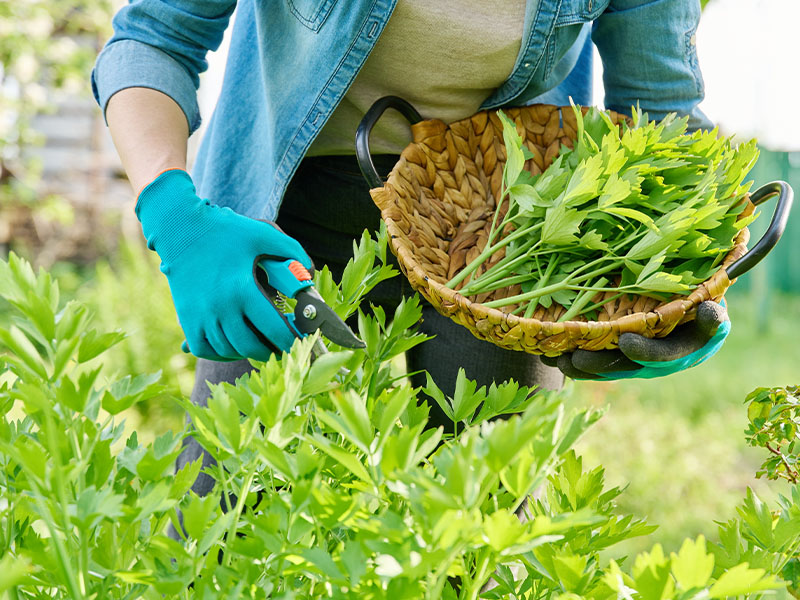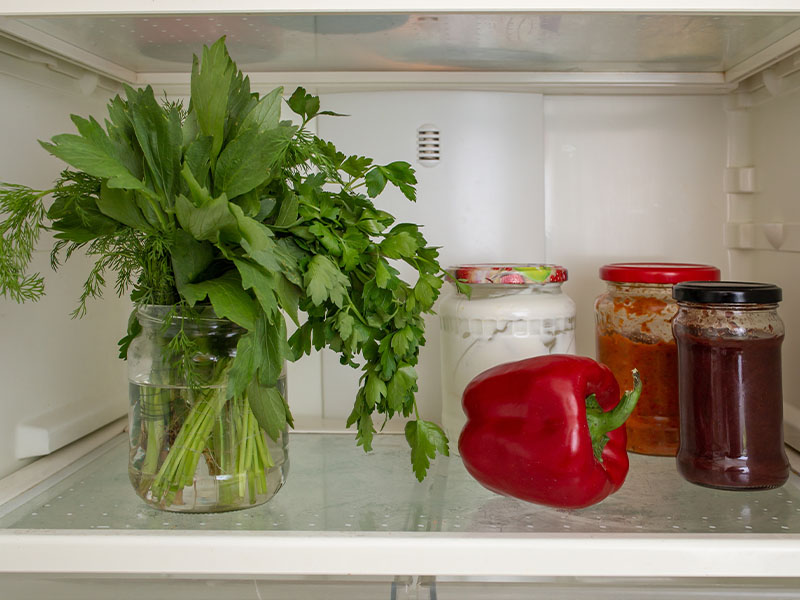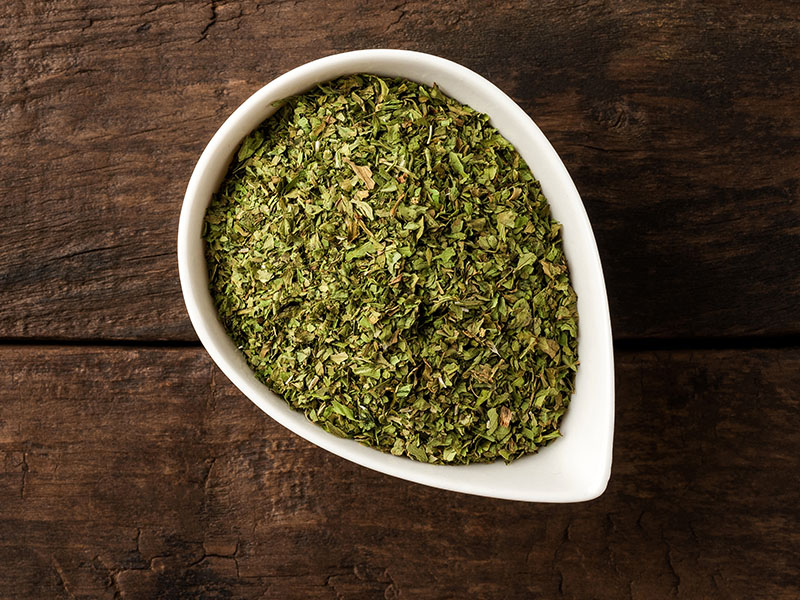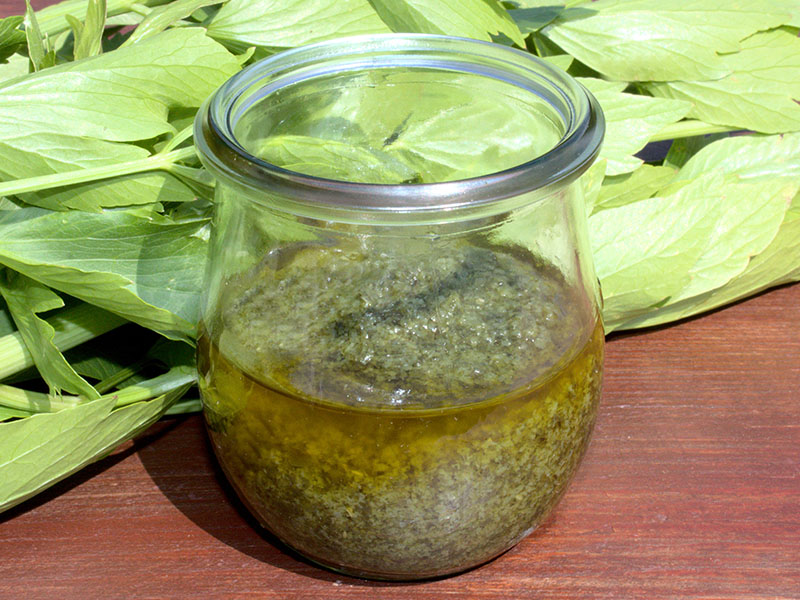Ever heard of lovage? If not, you're missing out on a secret weapon in both gardening and cooking! Often overlooked, this powerful herb brings depth and flavor to your dishes while adding elegance to your garden. Curious to learn more? You're in the right place! Get ready to uncover the magic of growing and using lovage, and discover why this herb deserves a prime spot in your garden and kitchen.
Whether you've got a green thumb or are seasoning your culinary skills, lovage is the herb you never knew you needed. Let's dive in!
What is Lovage?
Lovage, scientifically known as Levisticum officinale, is a perennial herb and a relative of celery and parsley. Sporting lush, dark green leaves, it resembles celery in appearance and flavor, but with a more intense aroma.
This ancient herb hails from the Mediterranean but has made its way into gardens worldwide thanks to its versatility and robust nature. Both its stems and leaves are edible and are used to enhance a variety of dishes.
A Brief History of Lovage
Lovage has a history as rich as its flavor. Beloved by the ancient Greeks and Romans, this herb was primarily used for medicinal purposes before its culinary potential was fully realized.
Historical records reveal that lovage was frequently used in love potions—its name even hints at romance! Over time, it transitioned from garden apothecaries to kitchen staples, particularly in European cuisines.
Why Grow Lovage in Your Garden?
There are plenty of reasons to welcome lovage into your garden. Firstly, it is remarkably easy to grow, making it perfect for beginners. It's low-maintenance and doesn't require constant attention.
Lovage also attracts beneficial insects, which can help control pests naturally. Plus, it's visually appealing with its tall, bushy presence, adding density to any garden landscape.
In the kitchen, lovage provides a gorgeous celery-like flavor with a peppery undertone, enhancing soups, stews, and salads. Its leaves can be used as a substitute for parsley or celery in recipes.
Its distinct taste makes it an excellent herb for creative chefs or adventurous cooks. It’s all-natural and versatile, perfect for those looking to experiment with new flavors.
Lovage vs. Celery
The most common comparison is between lovage and celery. While both offer similar flavors, lovage boasts a more intense aroma and a slightly bitter note giving it a unique edge.
Think of lovage as celery’s more robust cousin—more pungent, aromatic, and as some believe, even healthier.
Ideal Growing Conditions
Lovage thrives in well-draining soil and enjoys full sun exposure but can tolerate partial shade. It prefers a slightly acidic to neutral pH balance.
Plant it in a spot with ample space, as it can grow up to six feet tall. It’s quite cold-hardy, enduring many different climates and ideal for varied regions.
Planting Lovage
Start by picking a suitable garden spot with ample sunlight. Work in a good amount of compost into the soil to prepare it.
To plant, dig a hole slightly larger than the root ball of your seedling, water it well, and cover it with soil. Mulch around the base to retain moisture.
Tip: Make sure you choose a large spot for your loveage as it grows quite large!
Watering and Care Tips
Lovage isn't a fussy plant and doesn't need much care. During dry spells, ensure your plant gets an inch of water weekly.
Occasional feeding with balanced fertilizer helps sustain growth, particularly in the growing season. Mulch regularly to maintain soil moisture and suppress weeds.
Winterizing Your Lovage
In colder climates, add a thick layer of mulch to protect lovage during winter months. Cut it back to a few inches above the ground to help it survive frost.
Don't stress if lovage dies down in winter; it's preparing to pop back up in spring. Cheers to perennial power!

Harvesting Lovage
Harvest lovage leaves as required, beginning in early spring. For the best taste, pick them in the morning when their oils are most concentrated.
The stems and flowers can be harvested later on. Rinse them gently before use, and voilà—fresh flavor boosters are ready!
Harvesting is super simple; just grab something sharp (secateurs, snips, etc.) and start cutting!

Storing Lovage for Longevity
The easiest way to store loveage is in the fridge. To ensure your leaves last as long as possible keep them in a jar of water. Keeping a herb jar in the fridge will stop your leaves from drooping for weeks.
For longer storage, dry the leaves and store them in an airtight container—not only practical but keeps the garden’s essence alive year-round!

Culinary Uses - Where Lovage Shines
Lovage can elevate broths, stews, and sauces with its distinct flavor. Add it to stocks to infuse a celery-like taste.
Lovage also makes a delightful addition to potato dishes, or even as an ingredient in homemade herbal butters or infused oils.
Lovage in Salads
Lovage can heighten the flavor profile of salads—mix finely chopped leaves into leafy greens or sprinkle on top for garnish.
Its strong flavor means a little goes a long way, offering a surprising twist to a traditional salad.
Infuse Magic in Drinks with Lovage
Believe it or not, lovage can also be steeped into refreshing drinks. Try adding a sprig to homemade lemonade for an unexpected punch.
Lovage is also perfect for jazzing up cocktails, adding depth to classic concoctions like Bloody Marys or even craft gin.
Herbal Teas and Lovage
Lovage isn’t just for cooking! When brewed, it offers a unique blend of flavors in herbal teas, prized for its soothing and digestive properties.
Pair it with chamomile or mint to create calming blends that can lift spirits and ease tension.

Preserving Lovage Flavor with Freezing
Freezing lovage leaves helps preserve their flavor for several months. Simply chop fresh leaves and freeze them in ice or oil cubes.
Not only does this technique extend its shelf life, but it also adds convenience, allowing for easy portion control in recipes.
Stew It Up!
Lovage adds depth to hearty stews, especially alongside ingredients like root vegetables, lentils, and meats. Consider it a potent seasoning element!
Experiment by incorporating lovage into your favorite stew recipe, and savor the enriched flavors it offers.
Soups with a Twist
Lovage has long been a favorite in soups, not only for its taste but also its lovely fragrance. Add it as a finishing touch to vegetable or chicken soups.
Its aromatic properties tantalize senses and taste buds alike, perfect for lifting cool-weather soups.
Incorporating Lovage in Fish Dishes
Lovage’s herby, slightly citrusy notes complement fish excellently, either as a marinade component or a post-cooking garnish.
Its versatility makes it a great companion to various seafood meals, adding a slight zest to your plate!
Homemade Lovestruck Pesto
Swap basil with lovage in your next pesto for a unique twist. Combine it with nuts, olive oil, cheese, and garlic for a lovely blend.
This flavorful variation pairs well with pasta dishes or as a zesty spread!

The Unexpected Dessert Ingredient
If you dare, take advantage of lovage by creating desserts like ice creams or sorbets. Its herbal flavors can be a refreshing contrast to sweet treats.
Intriguingly avant-garde, lovage is a delightful challenge for innovative dessert creators!
DIY Lovage Butter for Smarter Cooking
Meld butter with chopped lovage for an herb-infused spread that’s perfect for roasts or fresh bread. This simple preparation can add significant flair to ordinary meals.
Try it as a steak butter or incorporated into pasta dishes for that extra kick.
Lovage Oil
Infuse lovage leaves in olive oil to create a versatile flavor enhancer for cooking and dressing dishes.
It brings a subtle, savory note to salads, veggies, and grilled foods in style.
The Bottom Line
Lovage is a true gem, offering culinary depth while being a valuable garden friend. Its versatility ensures that it caters to every cooking whim!
Whether you grow it yourself or buy it fresh, lovage is sure to add an enticing touch to your favorite favorites. Time to get creative!
Plant It & Start Experimenting
So why not start your lovage adventure today? Whether in your garden or your kitchen, it's bound to bring some botanically inspired joy.
Give it a try, and transform your garden into a secret culinary powerhouse!





Leave a Reply